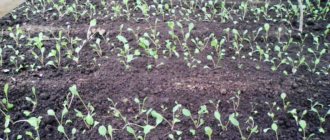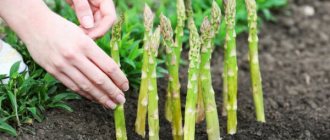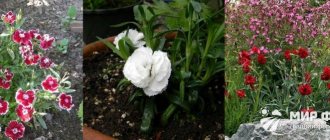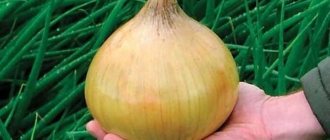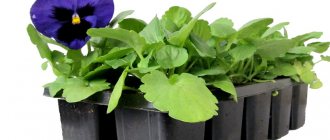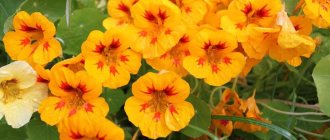The technology for growing amaranth is quite simple. Due to its unpretentiousness, the plant is especially popular. This is a unique flower, native to the lands of America. The crop has been grown for more than 8 thousand years. Many young leaves, flowers and stems are eaten, sent to feed livestock and used as a medicinal plant. To grow healthy and beautiful amaranth, you need to know when to plant it in open ground and how to care for it.
Brief information about the plant
Amaranth is an annual plant that belongs to the Amaranth family. The plant blooms from June to September. The inflorescences are collected in spike-shaped panicles, which can be red, golden, purple or green. The amaranth bush has a thick stem and elongated leaves, which are colored green or burgundy depending on the variety.
Amaranth can be of decorative, grain, vegetable and fodder type. However, most often, ornamental species are grown to decorate the site and vegetable plants that are suitable for consumption.
For summer residents, the plant is better known under the following names: amaranth, velvet, cockscomb, cat's tail.
The plant is distinguished not only by its decorative characteristics, but also by its beneficial qualities. Amaranth is used for medical purposes and helps to cope with diseases such as:
- Obesity.
- Kidney diseases.
- Diseases of blood vessels and heart.
- Increasing immunity after infectious diseases.
- Skin diseases accompanied by an inflammatory process.
Amaranth contains a lot of protein, so it is often used as animal feed.
Diseases and pests
Amaranth is different, but still an invasion of aphids and weevils can be disastrous for the plant. Aphids are dangerous to crops during the vegetative growth period and become more active in rainy summers. If you don't fight it, it can destroy all amaranth bushes. Weevil larvae settle inside the stem and stunt the growth of the plant. To combat harmful insects, amaranth should be sprayed with karbofos, acarin or actellik.
Another enemy of garden crops is fungal diseases. Black leg and brown rot appear as a result of the accumulation of moisture in the soil. Irrigation with Bordeaux mixture, colloidal sulfur, copper sulfate and other fungicides will help get rid of them.
The most common varieties
| Variety | Appearance | Peculiarities |
| Valentina | The height of the bush is 110 cm. The stem is strong with a large number of side shoots. During the flowering period, it is covered with burgundy inflorescences, which are collected in ears. The leaves are burgundy and elongated. | Suitable for human consumption. |
| Prefect | Plant height 80 cm. Spreading bush with variegated leaves up to 20 cm long. | Young leaves are yellow. During the growth period, green and burgundy blotches appear on the leaves. |
| Sturdy | The height of the bush is up to 1.4 meters. The leaves are green and juicy. The inflorescences are collected in a dense panicle of rich green color with brown splashes. | The growing season is 80 days. Can be used for food. |
| Green Thumb | The height of the bush is 50 cm. The shoots are strong, the leaves are elongated green. The inflorescences are colored emerald. | During seed ripening, the inflorescences turn brown. |
Rules of care
Shiritsa can hardly be called a capricious culture. She will require care and attention only at first. Even weeds cannot cope with this strong and large plant, so there will be a need for weeding only until it comes into force.
The growth rate of tall varieties is such that in one sunny warm day it can add up to 7cm!
Watering
Only required for the first month. During this time, the roots will go deep into the ground (up to 1 m) and the plant will no longer need watering. Only very hot and dry summers can become an exception.
Pinching
The procedure of pinching the tops is not necessary, but it stimulates the development of side shoots well, and therefore makes the bush more lush and beautiful and increases productivity.
Re-sow the grass at intervals of about 2 weeks; this will help fill the bed evenly and prolong fruiting.
When to plant seeds for seedlings
In order for the seedlings to have time to grow and get stronger before planting in open ground, the recommended planting dates are observed.
It takes 2-2.5 months to grow strong amaranth seedlings.
Many summer residents use hints from the Lunar calendar.
When planting, the region of residence is also taken into account, since weather conditions differ significantly.
- For southern regions , where the air temperature warms up faster, seeds for seedlings can be planted in mid-February.
- In the middle zone, seeds are sown in early March.
- In Siberia and the Urals, planting begins no earlier than the end of March, since overgrown seedlings are poorly accepted and remain weak for a long period.
Growing Amaranth on the windowsill
If you want to grow a full-fledged plant on your balcony, then in this case you should be patient. After the amaranth seeds have sprouted and 3-4 leaves appear on the seedlings, this is a sign that the plant can be transplanted into a separate pot. In this case, you can use plastic cups. Transplanting seedlings:
- Pour soil into plastic cups or small pots and lightly water it;
- Make a small depression in each pot and plant one bore there;
- Water the plant;
- Lightly pinch the top of the sprout; this procedure will help strengthen the roots of each plant.
Although amaranth is accustomed to an arid climate, do not forget to water it regularly and spray it with water from a spray bottle. And also periodically slightly fluff up the soil in each pot. When the height of the plant reaches 20-25 centimeters, it can already be eaten.
Amaranth leaves are an integral part of a healthy diet. Modern research confirms the fact that amaranth contains a large amount of vegetable protein, which in its properties is not inferior to animal protein. Amaranth leaves contain another, very rare component called squalene. Which allows you to prolong youth at the cellular level.
Amaranth leaves are used in many applications. They have also gained popularity in cooking. By growing just a few amaranth bushes on your balcony, you can not only diversify your diet, but also improve your health.
In cooking, amaranth leaves are most often used in the preparation of soups and fresh salads; they can also be an addition to meat dishes, for example, you can prepare chicken soufflé with amaranth leaves. To prepare it you will need:
- 500 gr. chicken fillet;
- 2 egg whites;
- 50 gr. fresh spinach leaves;
- 50 gr. fresh amaranth leaves;
- 50 gr. sun-dried tomatoes;
- Ground red pepper and salt to taste.
Cut the chicken fillet into small cubes and grind in a blender until it becomes a thick puree. In a separate bowl, beat 2 egg whites with the addition of a small amount of salt until a thick standing foam; the whites must be cold, otherwise the foam will not rise. Chop the spinach leaves, amaranth and sun-dried tomatoes, add salt, pepper and mix with the chicken puree, then carefully fold in the beaten egg whites.
Take cling film and place the mixture on it, then wrap it so that it forms a uniform sausage. Wrap in film a few more times and tie the tails well so that no water gets in. Place the soufflé in boiling water and cook covered for 20-25 minutes.
Preparing for sowing
Preparatory work allows you to obtain uniform seedlings and grow strong seedlings.
Seed selection
You need to buy amaranth seeds in specialized stores. Otherwise, you may encounter a fake and purchase wild species that have low decorative qualities or are not used for food.
When choosing seeds, consider the following features:
- Amaranth seeds with green leaves have a beige or cinnamon hue. The surface of the seeds is smooth and shiny;
- amaranth with red leaves has small black seeds.
Seeds collected from the site should not show signs of damage or mold.
Preparing seeds for sowing
Amaranth seeds are very small and have a good germination rate of about 90%, so no preparation is carried out before sowing.
Soil selection and preparation
The plant prefers loose soil. To grow seedlings, you can purchase a commercial substrate intended for violets.
If desired, you can prepare the soil mixture yourself. To do this, mix:
- 1 part turf;
- 2 parts peat;
- 1 part humus;
- 1 part coarse river sand.
The resulting composition is thoroughly mixed and fried in an oven to eliminate fungus and pest larvae. The duration of heat treatment is 20 minutes at a temperature of 70-90°C.
Choosing a container for seedlings
To plant seeds, use a container 10 cm high. The bottom of the container should have drainage holes to remove excess water. You can use plastic cups, pots, boxes, or food packaging as containers.
Before use, the container is treated with a solution of potassium permanganate. Mix 2 grams of substance in 1 liter of water. This treatment is necessary to disinfect containers.
Usage
Amaranths are readily grown in gardens and country houses, appreciating their decorative qualities. Their seeds are edible and used for food. These plants have extremely beneficial effects not only on humans, but also on the environment. Amaranth absorbs 2 times more carbon dioxide than other plants. Therefore, it can be used to combat the greenhouse effect.
In landscape design
Amaranths are one of the favorite and reliable decorative species. They are one of those annuals that can dwarf many perennials in size, color and use. These are not particularly exclusive species, but they are quite reliable. Their single flowers are microscopic; they show all their beauty in powerful paniculate inflorescences. And some species will also decorate the garden with beautiful, colorful leaves.
Amaranths grown in the garden are excellent plants for edging, suitable as a colorful addition to edgings. Low varieties are suitable for growing in pots on balconies, for fantastically colorful arrangements instead of coleus.
They are also well represented in compositions with species associated with rural gardens:
- immortelle bract;
- forget-me-not;
- nasturtium;
- delphinium.
The amaranth flower is well suited for cut flowers used for fresh and dried bouquets.
For bouquets
Amaranths for fresh bouquets are cut when half of the flowers are developed. Plants are uprooted and placed in water for several hours. Then the roots are removed. Prepared in this way, they remain fresh for 5-7 days.
Plants for dry bouquets are picked after setting the seeds. Before drying, it is necessary to remove the leaves from the flower stalks. Plants are dried tied in bunches, inflorescences down.
Sowing work
When planting amaranth seeds, follow the following algorithm:
- A drainage layer of expanded clay or perlite 2 cm thick is placed at the bottom of the planting container. This is necessary to prevent stagnation of water and prevent rotting of the root system.
- Fill the containers with soil, departing 2 cm from the top edge.
- The seeds are scattered in a thin layer over the surface of the soil and pressed to the ground. Surface sowing means that there is no need to cover the planting material with soil.
- Spray with water from a spray bottle and cover with glass or film.
Every day the cover is removed and the soil is ventilated, otherwise the seeds may rot. Ventilation duration is 15-30 minutes. Condensation from film or glass is wiped off. If the top layer of soil has dried out, it is moistened with warm, settled water.
Pest control measures
Any type of amaranth is quite resistant to various kinds of parasites. Complete destruction of the crop is considered unlikely, but the lack of timely treatment is fraught with the loss of up to 40% of the crop:
- The meadow moth is a butterfly of the moth family - light brown in color with dark spots on the wings. The cover may have a tint of yellow. Greater damage is caused by its pale green caterpillars. Spraying amaranth with a solution of sodium silicofluoride, systematic cleaning of crops manually and with store-bought biological products are effective.
- The beet flea beetle is a small bug with an elongated body about 2 mm of bronze color with tiny antennae. Damaged amaranth leaves become covered with small holes. Successful means of struggle are:
- timely compliance with crop rotation;
- compliance with planting deadlines;
- weeding.
Chemical control agents are used in more severe cases. The seeds are treated in advance and the plants are treated with insecticides.
To combat agricultural pests, we recommend karbofos (malathion), a broad-spectrum insecticide.
- Aphids are a common pest of almost any crop. It has a rounded green abdomen measuring 1-2 mm. Timely control - namely treating young shoots with a solution of laundry soap (200 grams per bucket of water), spraying with garlic water (2-3 heads and half a bucket of water) - will help protect the stems, leaves, seeds and flowers of amaranth. In advanced cases, you should purchase special products based on fatty acids or pyrethrins, as well as essential oils.
- Cruciferous flea beetle is characterized by the presence of long antennae, but depending on the species it has a different color (from dark to very light), no more than 2 mm in length. The insect attacks young leaves. Compliance with timely agrotechnical measures and spraying with organic products will help get rid of flea beetles. It is recommended to sprinkle the plants with tobacco dust, first combining them in equal proportions with phosphate rock or lime.
Share
How long will it take for the shoots to appear?
Shoots appear 4-6 days after planting. After the first shoots appear, the covering material is removed, otherwise burns may appear on the delicate leaves.
Since the seeds were sowed superficially, the root system of amaranth sprouts will be above the soil. To cover the bare roots of the plant, they are carefully covered with earth using a sieve.
Beneficial features
Various parts of amaranth have found their use in cooking, medicine and cosmetology.
Usage options:
- infusions are used to treat various diseases: the genitourinary system, constipation, hemorrhoids, colic. Also, help cope with inflammation on the skin;
- seed oil will help solve problems with the digestive tract (gastritis, ulcers, colitis, cirrhosis), and will also have a beneficial effect on the circulatory system (treats varicose veins, heart attack, hypertension, inflammatory diseases of the heart and blood vessels);
- young leaves have many useful elements and vitamins; they are eaten in salads, purees and soups;
- stems and leaves are used as an aromatic seasoning in various dishes;
- leaves and seeds are brewed as tea, added to compotes and fruit drinks;
- toasted seeds are used in baking and confectionery: sprinkled on buns, added to cakes and cream;
- crushed seeds are used to prepare porridge;
- Seed flour is added to doughs and sauces.
Important! Amaranth is contraindicated for people who have allergic reactions to this product. Most often it manifests itself in the form of nausea, dizziness and laryngeal swelling. In some cases, indigestion may occur.
Conditions for growing seedlings at home
By following simple care recommendations, even a novice gardener can grow amaranth seedlings.
Temperature and lighting
For rapid seedling growth, a temperature of +20-22°C is required. Indicators below +20°C lead to the plant growing poorly and becoming weak.
Seedlings should be placed on a well-lit windowsill, preferably on the south side. If there is not enough light, use phytolamps for additional illumination. Additional lighting is also used in cloudy weather.
Watering
Water the seedlings as the top layer of soil dries. Watering is done at the root so that drops do not fall on the ground part of the seedlings.
Picking
Picking is carried out so that the roots of the plant develop well. After this procedure, the seedlings quickly gain strength and are ready for further replanting in open ground. Picking is carried out only when the plant has 2-3 true leaves.
- The container with seedlings is watered generously with warm water and left for 2-3 hours.
- New individual containers are filled with the soil that was used when planting the seeds. You can choose peat cups, so during the process of transplanting into open ground, the planting container will not need to be cut; the seedlings are planted together with the container.
- Using a wooden spatula, separate one plant at a time along with the soil and transplant it into a new container.
- After picking, the seedlings are watered with warm water and the container is placed on the windowsill.
After the soil in the cups has settled a little, add a little more soil on top and compact it.
Top dressing
1.5-2 weeks after picking, the seedlings can be fed with wood ash. This type of fertilizer saturates the soil with nitrogen and reduces the risk of blackleg disease. The ash is sprayed through a sieve onto the soil in a layer of about 0.5 cm and watered with warm water.
Hardening
Hardening begins 2-3 weeks before planting in the ground. On the first day, open the window slightly to ventilate the room with the seedlings for 20-30 minutes. Every day the duration of hardening is increased by 30-60 minutes. The procedure is necessary so that the plant, after transplanting into open ground, quickly adapts to changing conditions.
Video: how to sow amaranth seeds correctly.
How and when to plant
And although amaranth has many advantages, it also has its disadvantages, including long germination. If you are planting amaranth to obtain oil, then you should decide in advance on the timing of sowing. At the same time, make sure that the plant has enough light and warmth.
In the Russian climate, where summer is short, seeds should be planted in the first half of February. With such early sowing, it is necessary to provide auxiliary lighting and monitor the temperature. For the full development of young seedlings, it is necessary to ensure a room temperature of 22-25 degrees.
The substrate for amaranth can be used as a universal one. It still needs to be prepared in the fall. The soil mixture should be loose, retain moisture well and contain all the necessary microelements.
If you are going to grow seedlings, then you should use a substrate consisting of turf soil, peat and humus. Take everything in equal quantities. Saturate the soil with mineral and potassium fertilizers in advance. You can also add nitrogen and wood ash. In addition, the soil should be disinfected. To do this, pour boiling water or a solution of potassium permanganate over it. This will eliminate pathogenic microorganisms.
This information will help you understand what the Mexican sunflower Tithonia looks like and how it can be planted in the ground.
This video will help you understand how to grow Bacopa from seeds at home.
For those who want to learn more about how planting and caring for garden balsam occurs.
Sowing seeds
Like Thyme seeds, Amaranth planting material must be pre-soaked. Then they will be able to hatch, but not germinate. In this way, the formation of seedlings can be accelerated. Place the seeds in moist soil no deeper than 0.5 cm. Pull polyethylene over the top of the container. Place the box in a warm room. The temperature should not be high, then the planting material will germinate better.
As soon as the first loops appear, place the seedlings in a bright and warm place. At the end of February there may not be enough light, so you will need to take care of additional lighting. But what Bacopa seeds look like in the photo can be seen in the contents of the article.
In the video - growing Amaranth:
For small seedlings, moderate watering is necessary, but without stagnation of water. If the seedlings are planted tightly, they should be thinned out. Perform picking 2-3 times so that the crop develops a powerful root system.
During picking, deepen the sprout to the first leaves. Caring for seedlings also involves the use of fertilizers. Complex fertilizers, for example, Kemira, are suitable for this. It should be applied as soon as true leaves form. The second time feeding will be necessary in a couple of weeks.
Planting seedlings in open ground
Amaranth seedlings should be replanted after the air warms up to +15°C. Plant the plant in the morning or in cloudy weather. For planting, choose an open sunny area, protected from drafts.
Amaranth, which is grown in sunny areas, is distinguished by its bright leaves and abundant flowering.
The distance between plants should be at least 30 cm. The crop has a highly developed root system, so if there is not enough space, the bushes will oppress each other. Amaranth goes well with any other plants. For decorative purposes, it is often used to decorate flower beds and garden paths.
After transplanting into open ground, seedlings may stop growing for 10-15 days. This is due to changing conditions. However, gradually the growth will become intense and the plant will quickly gain green mass.
Choosing a planting site, soil requirements
Amaranths are heat-loving plants; the place for them should be secluded, sunny, protected from strong winds. Plants have a lot of green mass and not very strong roots to support it. In the shade, varieties with colored leaves do not color as well as they should, and the wind easily knocks over tall specimens.
Most species are undemanding to soils. The soil for amaranth is preferable:
- light;
- permeable;
- not too wet and not dry;
- The recommended soil pH is 6.0-6.5.
The plant will grow well even on soils poor in nutrients, but it is better to sow it on humus soils with a high calcium content.
Only tricolor amaranth has higher requirements and needs fertile and humus-rich soil for optimal growth.
Caring for seedlings in open ground
After transplanting seedlings into open ground, it is important to follow proper care, which consists of the following recommendations:
- Seedlings tolerate drought well, but for rapid growth you need to regularly moisten the soil. Water the plant every 2 days after sunset. During the hot period, watering is carried out every day.
- 2 weeks after planting in open ground, the seedlings are fed. Complex mineral fertilizers, for example, Kemira Lux, are used as fertilizing. Mullein infusion is also used. To prepare, dissolve 1 kg of the substance in 2 liters of water and leave for fermentation for a day. The resulting composition is diluted in 5 liters of warm water and watered over the seedlings.
- Weeds are removed in a timely manner and the soil is loosened so that the plant receives a sufficient amount of oxygen. Often, to protect amaranth seedlings from weeds and maintain soil moisture, the area is mulched. To do this, use sawdust mixed with humus or sphagnum moss. The mulch thickness is at least 2-3 cm.
To get a lush bush, the tops of the plants are pinched. The procedure is carried out after the bush reaches a height of 20 cm.
The longest and most elongated shoots are pinched, thus forming attractive lush bushes.
General rules for growing amaranth
The crop can be grown in almost any climate zone, except for the desert and the Far North.
When cultivating it, the following characteristics of the plant should be taken into account:
- Amaranth is drought-resistant. It tolerates them much better than overwatering.
- Does not like excess moisture in the soil. Therefore, watering should be moderate. After each procedure, the soil between the rows must be loosened.
- To grow it, you should choose a well-lit place, since amaranth loves the sun very much.
- Optimal growing conditions are +20°C, but the plant can easily tolerate light night frosts (not lower than -2°C).
- It is little affected by pests and diseases.
To grow amaranth in Siberia, you need to use ready-made seedlings.
In order for the crop to branch well and produce a higher yield, it is necessary to systematically weed the bed and thin out the seedlings. A distance between stems of up to 10 cm is preferable for food specimens. A wider space (about 20 cm) is required for plants that are grown for seeds.
After the first month of growing season, the crop adds 6-7 cm per day. At this stage, there is no need to weed it, since the weeds cannot compete with amaranth. But we should not forget about applying organic or mineral fertilizers. Plantations need to be fed once every 10 days. It is better to do this in the morning, immediately after watering. You cannot overdo it with nitrogen fertilizers, as nitrates will accumulate in the plant, as a result it will be unsuitable for food.
Collecting seeds from the site
Amaranth seeds are collected only after the inflorescences have fully ripened. The most optimal period is considered to be from late August to mid-September. The collection process is carried out as follows:
- after the panicles have finished flowering, they are carefully cut off and placed on the windowsill for 2 months until fully ripened;
- The ears are kneaded so that the seeds fall out.
- then the grains are sifted through a fine sieve and placed in a dark, dry place.
Amaranth sprouts, what to cook from them
Amaranth is often used in cooking, and this applies not only to spices with the addition of amaranth and fresh leaves, this also applies to amaranth sprouts.
Amaranth sprouts are not only tasty and beautiful, but also very healthy. Sprouts contain plant stem cells, vitamins and minerals, which can not only heal and rejuvenate the body, but also prevent cancer, atherosclerosis, diabetes, coronary artery disease and heart disease.
Of course, you can’t prepare a dish from amaranth sprouts on your own, but they can be an excellent addition to many dishes.
For breakfast you can have an omelet with amaranth sprouts. To prepare it, just mix eggs, a little milk or cream, add salt and pepper to taste. Amaranth sprouts can be added to the pan, both during cooking and before serving the dish.
Amaranth sprouts also go well with all boiled and fresh vegetables. You can prepare a summer salad with amaranth sprouts, or even a vinaigrette.
Amaranth sprouts can also serve as a side dish for meat or fish. To prepare a healthy side dish of green beans and amaranth sprouts, you will need:
- 300 gr. string beans;
- 100 gr. amaranth sprouts;
- 1 boiled egg;
- 150 ml. cream;
- Salt and white pepper to taste.
Cook the green beans for 3 minutes in boiling salted water, then quickly drain in a colander and rinse in cold water. Then place the green beans in a hot frying pan and fry for 2 minutes, then pour in the cream and reduce the heat, simmer for 2-3 minutes. Then add amaranth sprouts, a finely chopped egg, salt and pepper to the frying pan, mix well and simmer a little. This side dish is served warm.
Common mistakes when growing seedlings
When growing amaranth seedlings, summer residents make mistakes that lead to the death of the plants. The most common ones include:
- incorrectly chosen landing site. Planting the plant on a loamy type of soil leads to the fact that amaranth grows weakly and does not form buds. To correct the situation, humus is added to the soil in a proportion of 10 kg per 1 m2 and river sand 5 kg per 1 m2;
- too early planting in open ground. The plant does not tolerate night frosts well. If the seedlings have outgrown and need to be planted in the ground, then cover the bushes with film or plastic bottles at night;
- planting seeds too deep. The planting material is not deepened, otherwise the seedlings will be uneven, or the seeds will not germinate and will rot.
Another mistake when growing seedlings is sowing seeds too thickly. If the seedlings have sprouted densely, thinning is carried out, leaving the plants at a distance of 1 cm from each other. Such actions also facilitate the picking process in the future.
Amaranth is a common plant among summer residents. Caring for the crop is undemanding, so even a beginner can handle it. In order to get a lush bush, it is recommended to grow amaranth in seedlings, and only after that transplant the plants into open ground.
What to feed?
In order for amaranth to develop effectively, it is recommended to apply fertilizers to the soil even when planting seeds or seedlings.
About 15 grams are added to the first feeding. superphosphate and 15 g. potassium sulfate per 1 sq. m. Then, every 20 days, organic and mineral fertilizers are applied alternately. To increase fertility and eliminate dryness and weeds, you can mulch the soil with ordinary grass.
The application of chemical fertilizers requires caution, since amaranth absorbs nitrogen, accumulating nitrates: do not exceed the permissible proportions
